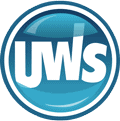Not only are images integral for readers to successfully interact with your content, but they are essential for search engine optimization. Regardless of the topic you are presenting, the goal remains the same, to provide engaging images and content that will actually reach your audience and beyond. One way to improve your search engine rankings is to optimize your images to ensure your content is competitive. Learn tips for image optimization that boost engagement and find out who to contact for a reliable and innovative SEO company in Kitchener.
Reduce the File Size Without Sacrificing Quality
If keeping readers on your page is the primary goal, images can’t have a substantial delay while loading. For most customers, the average anticipated load time for images and other content is within two seconds. If images remain in the high-quality format that photographers often deliver, the load time can be far greater than either you or your customers will appreciate. The best way to combat a lag in loading is to reduce the file size in image optimization for SEO.
File Size vs. Image Size
Note that file size and image size are different. A common point of confusion is resizing an image to learn that load times remain slow. Resizing an image simply means that the image’s dimensions have been altered. The file size, the amount of space required for storage on the server, must be reduced for the load time to be affected.
Compression Tips and Tools
Compressing images will automatically resize files for better load times. However, be cautious about double-checking the images for quality. Too much compression can leave an image with poor rendering that falls flat with users. Many different tools are available for free and purchase that can help optimize images for web publication to make the process easier.
- TinyPNG
- Adobe Photoshop
- Yoast SEO
- ShortPixel
- ImageOptim
- SVG options
Maximize Alt Text And Understanding Its Purpose
Alternative text is a textual description of an image. Some website developers mistakenly cram keywords in alt text and are unaware that unnecessary packing leads to confusion and unmatched leads. The best SEO practice is straightforward, concise alt text that meets your site’s needs and increases accessibility for all users.
Google’s Directive
Google’s ranking system for alt text is based on clarity and accuracy with keywords in context with the site. Cramming makes it difficult, if not impossible, to meet Google’s crawling needs to properly index and rank your images and location.
Website Accessibility
Alt text wasn’t only created with search engine ranking in mind. The alternative text makes the internet a more accessible place for all users. With appropriate and accurate alt text, not only will you meet accessibility standards with your website, but you are more likely to reach more significant audiences than before.
Create a Sitemap Including Visual Content
Sitemaps help search crawlers pick out the appropriate information and index it carefully for ranking returns. Most websites already have sitemaps in place as part of standard contracts and organizational methods. However, image indexing is not always a part of the sitemap, but for SEO, it should be.
Organization Equals Location
Organizing images alongside other page information helps crawlers locate your data more efficiently. The way that people choose to set up sitemaps can vary, but keeping a friendly sitemap for your audience, rather than XML alone, is ideal for increasing user engagement and search results.
Tips For Mapping Success
There are tools available that sitemap. If you choose to take on the task, be sure to include the following information about each image for best results:
- Title
- Description
- URL Location
- Caption
- License information
To learn more about improving the ranking of your content images or other SEO optimization, contact the professionals at Unwired Web Solutions in Kitchener today.
